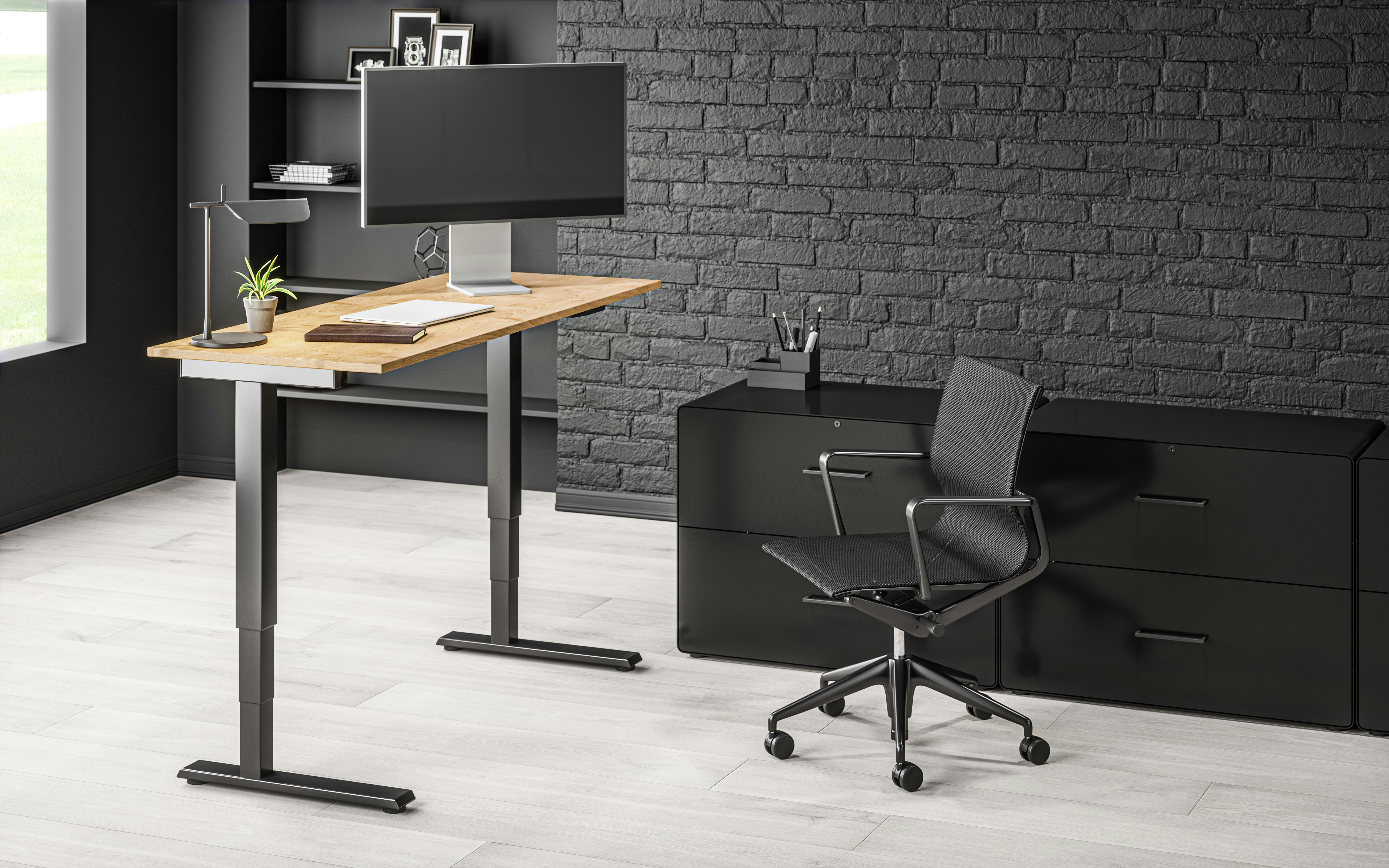Why upgrade your Office Furniture?

Enhancing Productivity and Employee Well-Being
Investing in modern office furniture is critical not only for aesthetics but also for boosting productivity and enhancing employee well-being. Ergonomically designed furniture promotes a healthier workplace environment, addressing the common discomforts associated with prolonged sitting and improper workspace setups. Research indicates that employees who work in ergonomically optimized settings tend to exhibit increased efficiency and job satisfaction.
Studies show that traditional office furniture often contributes to a range of health problems, including musculoskeletal disorders, which can lead to increased absenteeism and decreased morale. Upgrading to ergonomic chairs, adjustable desks, and properly positioned monitors can alleviate these discomforts. For instance, ergonomic office chairs provide essential lumbar support, which helps in maintaining the natural curve of the spine and reduces strain on the lower back. This, in turn, translates to enhanced concentration and productivity as employees experience less pain and discomfort throughout the workday.
Aesthetic and functional workspaces have a significant impact on employee morale. Modern office furniture that encourages collaboration and creativity helps employees connect better with their environment, which can lead to more innovative solutions and ideas. Recent studies show that employees in well-designed workspaces report higher levels of engagement and a stronger sense of ownership over their tasks. As office design evolves to incorporate elements that prioritize comfort and mobility, employee well-being improves significantly.
Additionally, organizations that prioritize ergonomics and comfort often see a reduction in health-related costs over time. Fewer complaints related to physical discomfort mean less reliance on medical interventions, allowing companies to allocate resources elsewhere. Therefore, the connection between office furniture design and workforce health is undeniable, serving as a vital consideration for companies looking to enhance productivity and employee well-being.
Creating a Modern and Inviting Work Environment with Office Furniture
In today’s competitive business landscape, creating an inviting work environment is essential for the overall success of any organization. One significant factor contributing to this atmosphere is the aesthetics of the workspace, largely influenced by the office furniture. Upgrading old office furniture can effectively revitalize the ambiance, fostering a modern and visually appealing environment that resonates positivity.
A well-designed office space equipped with contemporary furniture not only enhances the office’s visual appeal but also plays a crucial role in boosting employee morale. When employees are surrounded by aesthetically pleasing surroundings, their motivation and productivity levels tend to rise. An inspiring workspace, adorned with ergonomic desks and stylish seating, encourages creativity and collaboration among team members. This, in turn, contributes to enhanced job satisfaction and overall employee well-being.
Moreover, an upgraded office environment reflects professionalism and attention to detail, leaving a lasting impression on clients and visitors. The impression an office conveys can significantly influence business relationships; a clean, modern workspace often leads to positive perceptions about the company’s values and its commitment to quality. A thoughtfully designed space can serve as a marketing tool, quietly communicating the company’s dedication to excellence.
In this context, the choice of office furniture should align with the company’s branding and culture. Whether opting for sleek and modern designs or comfortable and home-like furnishings, the selected items should create a cohesive look that invites both employees and clients. Therefore, investing in modern office furniture is not merely about aesthetics; it encompasses an understanding of its impact on workplace culture, employee satisfaction, and the overall impression the company leaves on its stakeholders.
Cost-Effectiveness and Long-Term Investment
Upgrading old office furniture is often perceived as an unnecessary expense; however, it can be a strategic investment that leads to significant cost savings over time. High-quality, durable furniture serves not only an aesthetic function but also contributes to a functional workspace that enhances overall productivity. When considering the financial implications, it is essential to analyze both the short-term and long-term benefits of this investment.
One important factor to consider is the reduced maintenance costs associated with new office furniture. Older, worn furniture typically requires more frequent repairs and may necessitate unscheduled replacements. These ongoing expenses can accumulate, ultimately negating any initial savings gained from retaining inexpensive furniture. On the other hand, selecting durable options ensures that your investment contributes to longevity and decreases the likelihood of additional costs from repairs, providing a more cost-effective solution over time.
Moreover, furniture impacts not only operational efficiency but also employee satisfaction and retention. A well-designed and ergonomically sound workspace can lead to increased comfort for employees, reducing issues related to physical strain or discomfort. This, in turn, can lead to decreased absenteeism and higher employee morale, both of which are crucial metrics for any organization seeking to enhance productivity. Investing in high-quality office furniture ultimately yields returns that are reflected in both employee effectiveness and the organization’s positive perception.
To sum up, while the initial outlay for upgrading furniture may seem substantial, it is critical to consider it a long-term investment rather than a one-time expense. Evaluating the total cost of ownership, which includes maintenance and the impact on employee productivity, reveals that investing in quality office furniture can be financially prudent and strategically beneficial.
Sustainability and Eco-Friendly Practices
In today’s increasingly environmentally conscious society, the sustainability of office furniture choices has become a significant consideration for many businesses. Upgrading old office furniture with a focus on eco-friendly materials and practices not only benefits the environment but also enhances a company’s reputation as a responsible organization. Selecting furniture made from sustainable materials, such as bamboo, recycled plastics, or responsibly sourced wood, demonstrates a commitment to environmental stewardship and reduces the overall carbon footprint associated with office furnishings.
Moreover, incorporating sustainable practices into furniture procurement can significantly impact energy consumption and waste production. For instance, manufacturers that prioritize eco-friendly production processes often use less energy and produce less waste during production. This shift can contribute positively to the environment, supporting a more sustainable future. By selecting these office furniture options, organizations can demonstrate an ongoing commitment to reducing their environmental impact while potentially lowering long-term operational costs.
Beyond purchasing new sustainable furniture, businesses also have a responsibility to consider the fate of their old office furniture. Many companies overlook the potential for recycling or donating their used items, instead discarding them in landfills. Donating functional office equipment and furnishings to local charities or organizations promotes reuse. It gives these items a second life, which can be beneficial for both the community and the company’s image.
In conclusion, embracing sustainability and eco-friendly practices in the office furniture upgrade process is crucial for mitigating environmental impact while reinforcing the organization’s values. By investing in sustainable materials, engaging in responsible recycling and donation strategies, and prioritizing eco-friendly sourcing, businesses can make a significant contribution to a healthier planet and promote a positive corporate image. This proactive approach not only aligns with global environmental goals but also resonates with an increasingly aware customer base that values sustainability in their business dealings.
